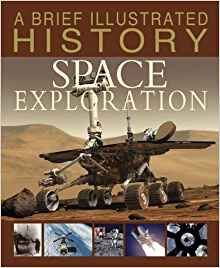-
How Do Scientists Explore Space?
Robert Snedden
eBook (Raintree, Dec. 21, 2015)This book explores the methods scientists use to explore space, including telescopes, space stations, and probes.
-
Explor A Maze
Robert Snedden
Paperback (Millbrook Press, Sept. 1, 1997)Text, maps, and mazes follow the journeys of ten explorers, including Leif Erikson, Marco Polo, Vasco da Gama, David Livingstone, and Neil Armstrong and "Buzz" Aldrin S
S
-
Materials Engineering and Exploring Properties
Robert Snedden
Paperback (Crabtree Pub Co, Sept. 15, 2015)"You might be surprised at the huge variety of materials we use every day, in the places we live, the vehicles we use, the clothes we wear, and in preparing the food we eat. This book explores how materials engineers research, design, and develop the materials needed to make these products a reality. Readers will also learn how to combine their understanding of materials science and the engineering design process to tackle a design challenge of their own."-- U
U
-
How Do Scientists Explore Space?
Robert Snedden
Library Binding (Raintree, July 1, 2011)This book explores the methods scientists use to explore space, including telescopes, space stations, and probes.
-
Adaptation and Survival
Robert Snedden
Paperback (Raintree, Jan. 1, 2012)Why do tigers have stripes? Do they choose to have them, or is that just how they are? Adaptation and Survival explains what is meant by the fitness of an organism and shows how adaptations improve a plant or animal's chances of survival to have offspring. It tackles common confusions about the science and shows how topics are relevant to the reader.
-
How Does a Waterfall Become Electricity?
Robert Snedden
Paperback (Raintree, Aug. 15, 2016)What is the world's tallest waterfall? How do dams help generate water power? What happens when a waterwheel spins? This series explores the causes and effects that shape our world. From the underwater volcanoes that sprout into islands, to the rushing waterfalls that spark electric currents, this series demonstrates how both natural and man-made phenomena occur. U
U
-
Environmental Engineering and the Science of Sustainability
Robert Snedden
Paperback (Crabtree Publishing Company, Dec. 15, 2013)Examines how environmental engineers combine scientific concepts with the engineering design process to find ways to increase the health and comfort of people today, with the smallest negative impact to the environment. X
X
-
Yuck!: A Big Book of Little Horrors
Robert Snedden
Hardcover (Simon & Schuster Children's Publishing, May 1, 1996)Larger-than-life full-color photographs take a close-up look at common household items and the tiny creatures that lurk in every corner. V
V
-
Mechanical Engineering and Simple Machines
Robert Snedden
Paperback (Crabtree Publishing Company, Feb. 28, 2013)This informative book explores the science of simple machines and how it relates to the exciting field of mechanical engineering. T
T
-
A Brief Illustrated History of Space Exploration
Robert Snedden
Paperback (Raintree, March 8, 2018)None
-
Nutrition: From Birth to Old Age
Robert Snedden
Paperback (Heinemann, Jan. 1, 2013)Our bodies are always active - from before we are born until the day we die. Even when we’re asleep our hearts continue to beat, we keep on breathing, and the cells that make up our bodies are constantly being repaired and renewed. All of this activity requires a supply of energy and a source of raw materials. Both of these things come from the food we eat. This book explains the importance of nutrition, and shows how things like appetite and the foods we want and need change during our lives. X
X
-
Forces and Motion
Robert Snedden
Library Binding (Gareth Stevens Pub Secondary Lib, Jan. 12, 2007)Explores how forces and motion are related, covering such topics as inertia, friction, speed, acceleration, pressure, and gravity. X
X